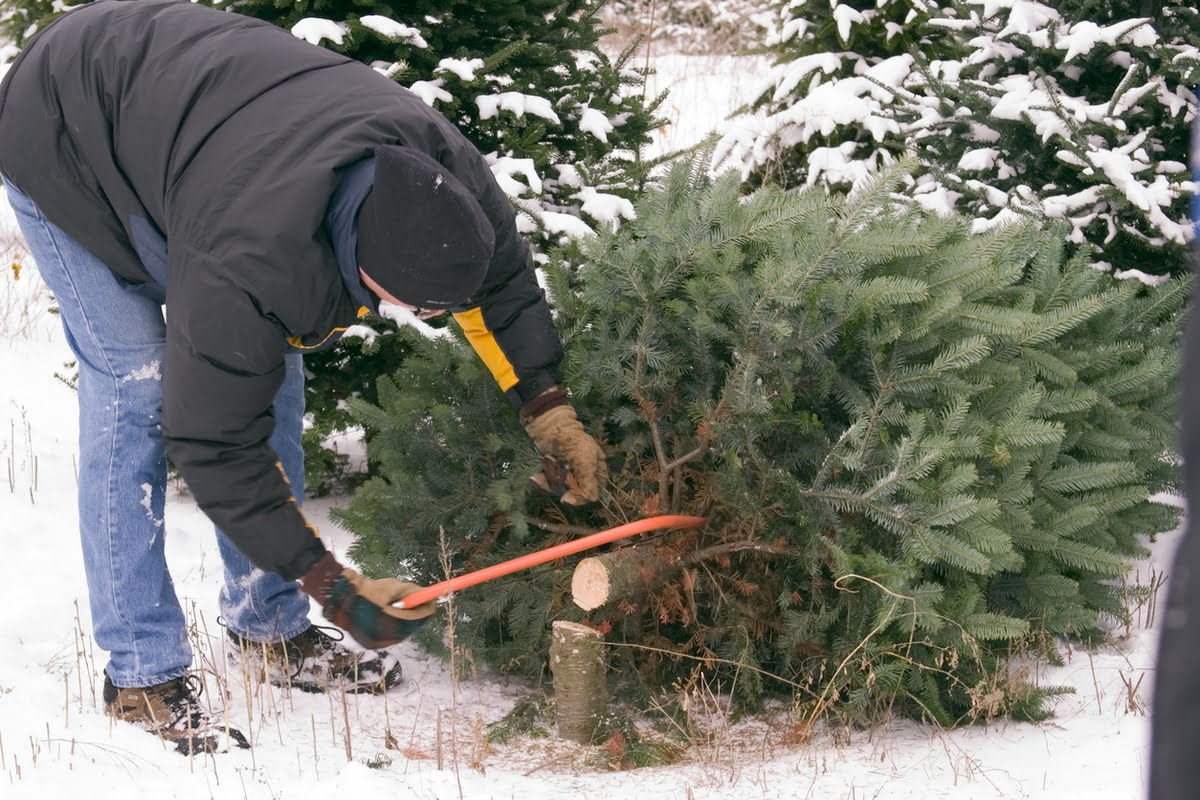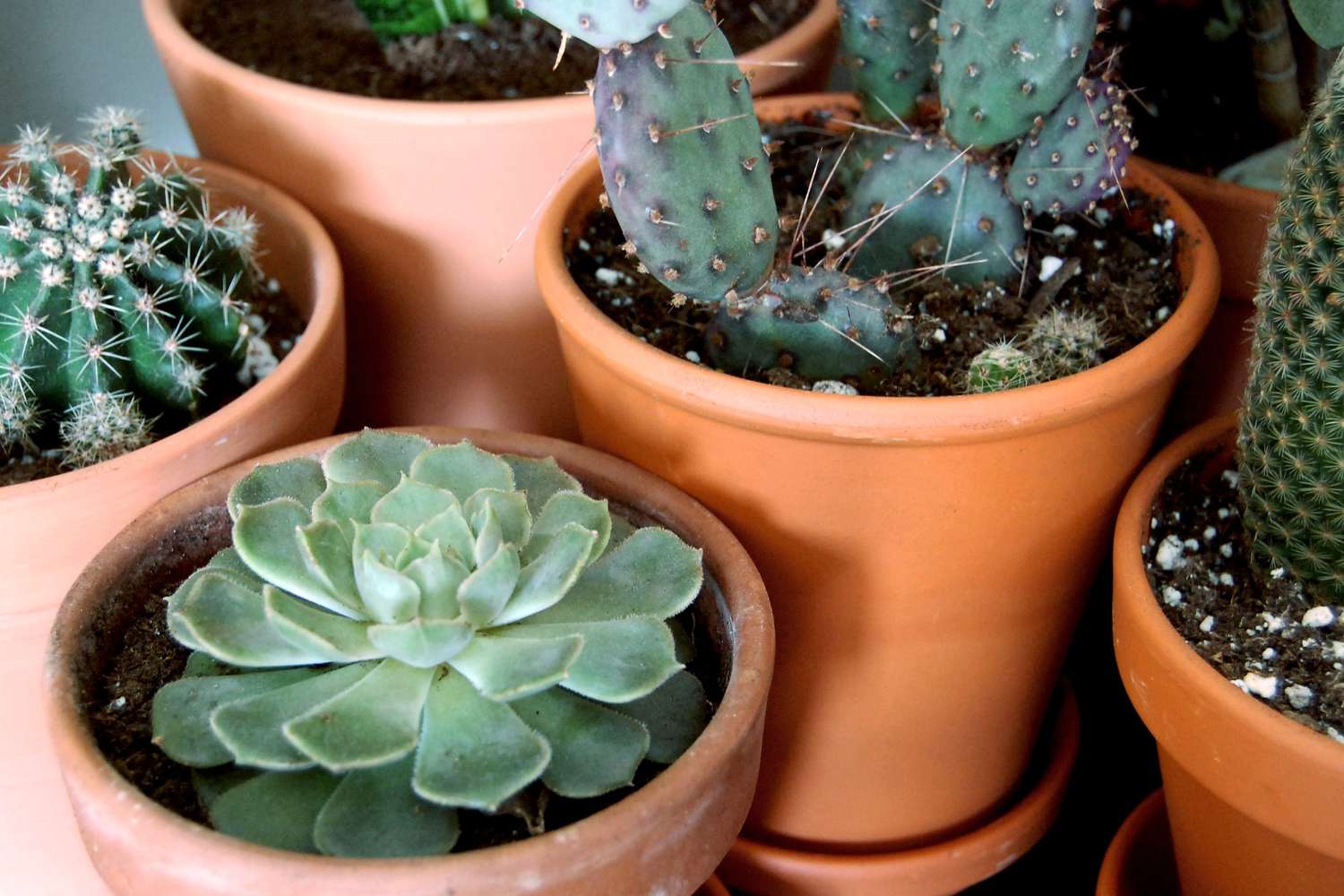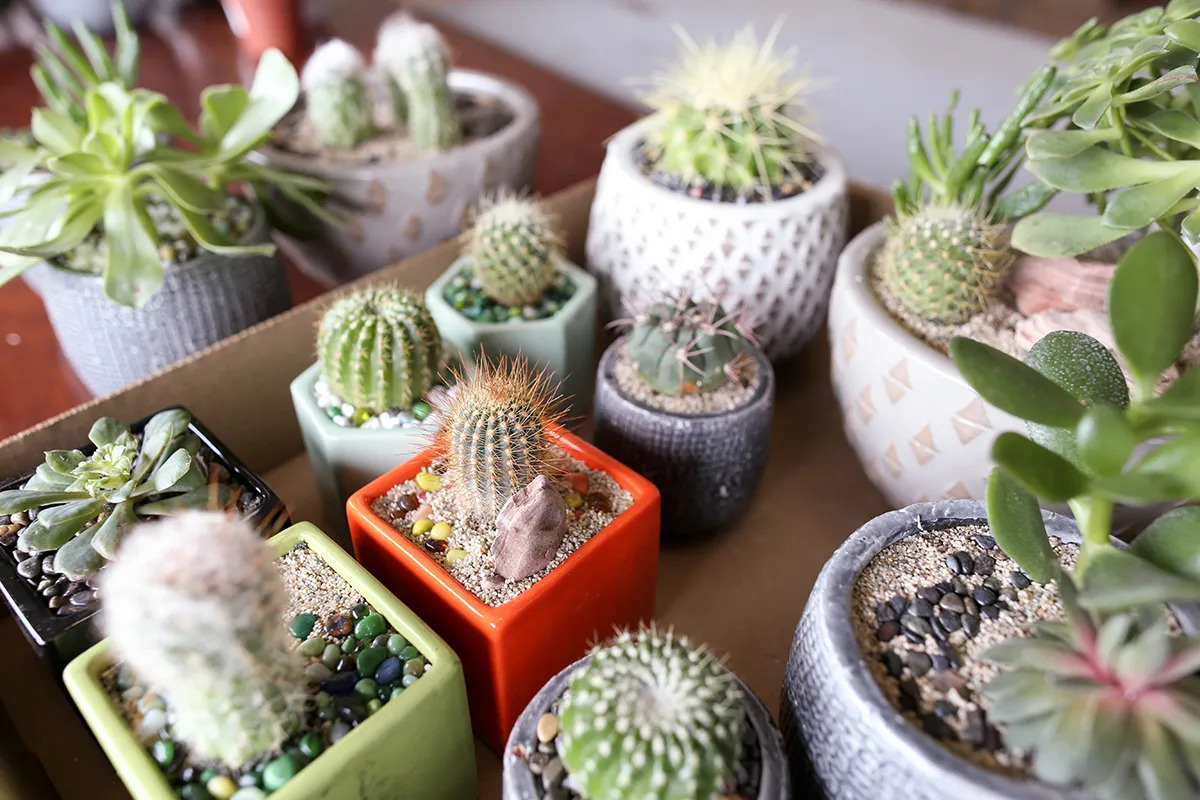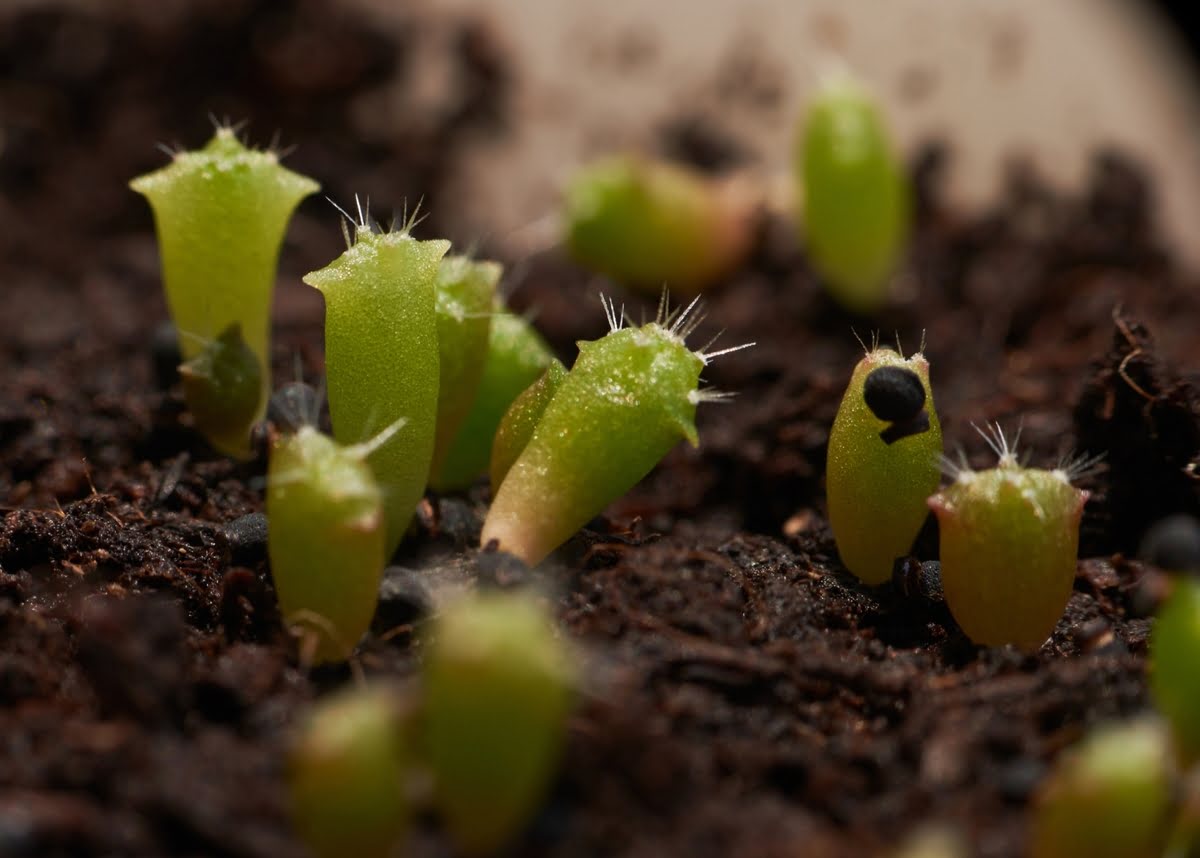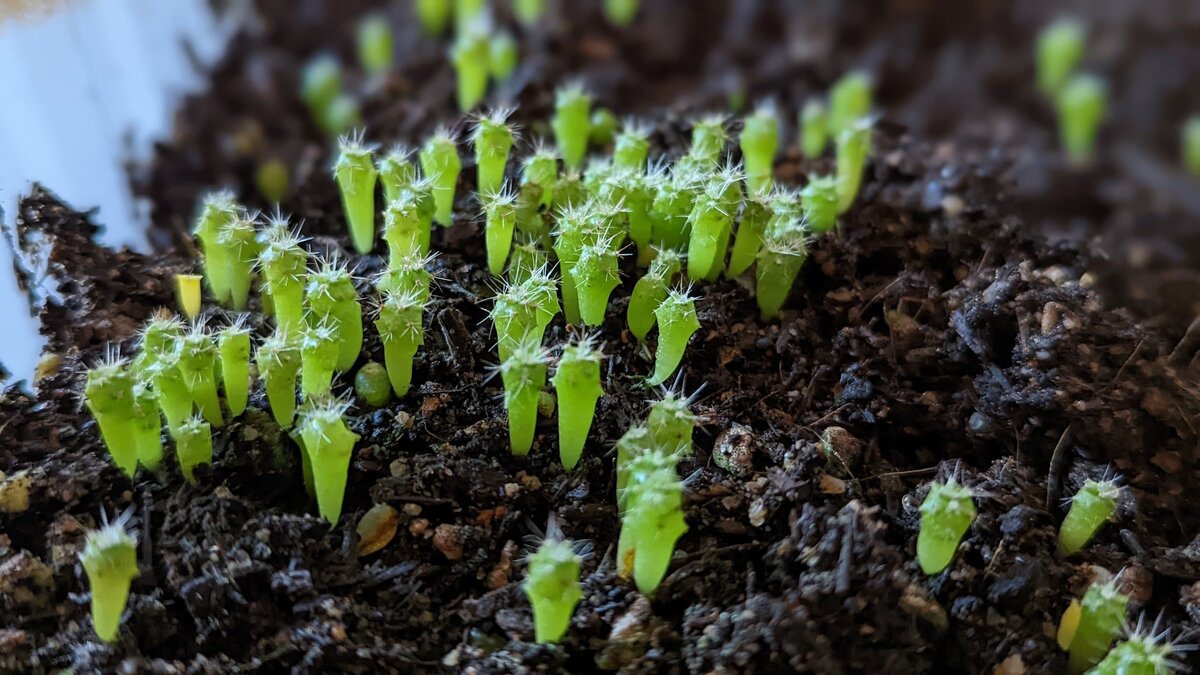Home>Types of Gardening>Ornamental Gardening>What Fertilizer For Christmas Cactus


Ornamental Gardening
What Fertilizer For Christmas Cactus
Modified: January 22, 2024
Find the perfect fertilizer for your Christmas cactus to ensure healthy growth and vibrant blooms. Explore expert tips and recommendations for ornamental gardening.
(Many of the links in this article redirect to a specific reviewed product. Your purchase of these products through affiliate links helps to generate commission for Chicagolandgardening.com, at no extra cost. Learn more)
Table of Contents
- Introduction
- Understanding Christmas Cactus
- Importance of Fertilizing Christmas Cactus
- Factors to Consider When Choosing Fertilizer
- Organic Fertilizers for Christmas Cactus
- Synthetic Fertilizers for Christmas Cactus
- Best Fertilizer Options for Christmas Cactus
- Application and Timing of Fertilizer
- Tips for Successful Fertilization
- Conclusion
Introduction
Welcome to the wonderful world of ornamental gardening! Whether you are a seasoned gardener or just beginning to explore the joys of cultivating vibrant, beautiful plants, you have come to the right place. In this article, we will dive into the fascinating realm of Christmas cactus fertilization and discover the secrets to keeping these stunning plants thriving and blooming.
Before we delve into the specifics of fertilizing your Christmas cactus, let’s take a moment to understand what makes these plants so unique and special. The Christmas cactus, scientifically known as Schlumbergera spp., is a popular choice among indoor gardeners for its vibrant blooms, cascading stems, and relatively easy care requirements.
Native to the tropical rainforests of Brazil, the Christmas cactus has adapted to a life of growing on trees, where it receives filtered light and ample moisture. Its distinctive foliage consists of flattened, elongated stems that resemble leaves and are segmented into sections. These segments, known as phylloclades, serve as the site for chlorophyll production and energy storage.
What sets the Christmas cactus apart from other houseplants is its mesmerizing blooming pattern. Whereas most plants bloom in response to increased daylight, the Christmas cactus flowers when exposed to shorter days and cooler temperatures. It typically produces stunning, star-shaped blooms in shades ranging from white and pink to red and purple, bringing a burst of color to your home during the holiday season.
To ensure your Christmas cactus continues to thrive and put on a spectacular floral display year after year, regular fertilization is essential. Fertilizers provide the necessary nutrients that may be lacking in the plant’s natural environment, helping to support healthy growth and vibrant blooms.
In the following sections, we will explore the factors to consider when choosing the right fertilizer for your Christmas cactus, including organic and synthetic options. We will also discuss the best fertilizer choices and provide tips for successful application and timing. So, let’s dive in and discover the secrets to keeping your Christmas cactus healthy and flourishing!
Understanding Christmas Cactus
Before we delve into the intricacies of fertilizing your Christmas cactus, it’s important to have a good understanding of this unique plant. The Christmas cactus, scientifically known as Schlumbergera spp., is a popular houseplant cherished for its striking flowers and cascading stems.
The Christmas cactus is native to the tropical rainforests of Brazil, where it grows epiphytically on trees. Adapted to this environment, it requires well-draining soil and indirect or filtered light. It is also known for its ability to thrive in relatively low light conditions, making it an ideal choice for indoor gardening.
One of the distinguishing features of the Christmas cactus is its segmented stems, which resemble leaves. These segments, known as phylloclades, store water and serve as the site for chlorophyll production, enabling the plant to photosynthesize and grow.
What truly sets the Christmas cactus apart is its unique blooming pattern. Unlike most plants that flower in response to increased daylight, the Christmas cactus blooms when exposed to shorter days and cooler temperatures. This is why it is often associated with the holiday season.
When the conditions are right, the Christmas cactus produces breathtaking, star-shaped flowers in colors that range from white and pink to red and purple. The flowers can last for several weeks, providing a stunning display that brings joy and color to any space.
While the Christmas cactus is renowned for its winter blooms, it is important to note that it requires specific conditions to initiate blooming. It typically needs a period of cool temperatures and reduced daylight to trigger flower production.
Understanding these unique characteristics and growing requirements of the Christmas cactus is key to successfully caring for and fertilizing this beautiful plant. By providing the right conditions and nutrients, you can ensure that your Christmas cactus remains healthy, vibrant, and ready to wow you with its stunning blooms year after year.
Importance of Fertilizing Christmas Cactus
Fertilizing your Christmas cactus is crucial for its overall health and vitality. While these plants are resilient and can survive in less-than-ideal conditions, providing them with the right nutrients will ensure optimal growth, abundant blooms, and robust foliage.
One of the primary reasons for fertilizing your Christmas cactus is to replenish the nutrients that may be depleted in its potting mix over time. Indoor plants rely solely on the nutrients present in their growing medium, and these nutrients gradually diminish as the plant consumes them. Fertilizing helps to restore the essential elements necessary for healthy growth.
Fertilizers are formulated with a blend of nitrogen (N), phosphorus (P), and potassium (K), along with trace elements like iron, magnesium, and calcium. Each of these nutrients plays a vital role in different aspects of plant development.
Nitrogen is essential for promoting lush, green foliage and overall growth. Phosphorus supports strong root development, disease resistance, and flower production. Potassium, also known as potash, aids in overall plant vigor, stress tolerance, and flower coloration.
In addition to these macronutrients, Christmas cactus requires a range of micronutrients for optimal health. These include iron, magnesium, and calcium, which are necessary for chlorophyll synthesis, cell division, and enzyme activation.
By providing your Christmas cactus with a well-balanced fertilizer, you can ensure that it receives all the necessary nutrients to support its growth and blooming potential. This will result in vigorous stems, vibrant foliage, and abundant, show-stopping blooms.
Furthermore, fertilizing your Christmas cactus can help improve its overall resistance to pests and diseases. When a plant is well-nourished, it is better equipped to fight off common pests like mealybugs and scales. It also has a stronger immune system to ward off fungal and bacterial infections.
However, it’s crucial to strike the right balance when fertilizing your Christmas cactus. Too much fertilizer can cause root burn and damage, resulting in stunted growth or even death of the plant. On the other hand, insufficient fertilization can lead to nutrient deficiencies, weak growth, and reduced flowering.
By understanding the importance of fertilizing your Christmas cactus and providing it with the right nutrients in the proper amounts, you can create the optimal conditions for its growth and flowering success. The next sections will delve further into the factors to consider when choosing a fertilizer and the specific options available for your Christmas cactus.
Factors to Consider When Choosing Fertilizer
When it comes to choosing the right fertilizer for your Christmas cactus, several factors should be taken into consideration. By understanding these factors, you can make an informed decision and provide your plant with the optimal nourishment it needs to thrive.
1. Nutrient Composition: The nutrient composition of the fertilizer is a crucial factor to consider. Look for a balanced fertilizer specifically formulated for flowering houseplants. These fertilizers typically have an N-P-K ratio of 10-10-10 or similar, indicating equal proportions of nitrogen, phosphorus, and potassium. The balanced ratio helps promote overall plant health and flowering.
2. Slow-Release vs. Water-Soluble: Fertilizers come in both slow-release and water-soluble forms. Slow-release fertilizers gradually release nutrients over an extended period, providing a steady supply of nourishment. Water-soluble fertilizers dissolve quickly and provide an immediate nutrient boost. Both types can be effective, but consider your own preferences and gardening style when selecting a type.
3. Organic vs. Synthetic: Another consideration is whether to choose organic or synthetic fertilizers. Organic fertilizers are derived from natural sources and contain beneficial microorganisms that can improve soil health. They are often slow-release and provide a more sustainable and environmentally-friendly option. Synthetic fertilizers, on the other hand, are chemical-based and provide a quick nutrient boost. Choose the option that aligns with your gardening philosophy and preferences.
4. pH Levels: The pH level of the fertilizer is also important. Christmas cacti prefer slightly acidic to neutral soils, with a pH range of 5.5 to 6.5. Select a fertilizer with a pH that falls within this range to ensure optimal nutrient absorption and avoid potential imbalances in the soil.
5. Watering Routine: Consider your watering routine when selecting a fertilizer. If you frequently water your Christmas cactus, a water-soluble fertilizer may be suitable, as it will dissolve and distribute evenly with each watering. If you prefer a low-maintenance approach or tend to underwater your plant, a slow-release fertilizer may be a better option, as it will provide a gradual nutrient release over time.
By considering these factors and understanding the specific needs of your Christmas cactus, you can choose a fertilizer that provides the essential nutrients and promotes healthy growth and flowering. In the following sections, we will explore organic and synthetic fertilizer options and discuss some of the best choices available for your Christmas cactus.
Organic Fertilizers for Christmas Cactus
If you prefer an organic approach to fertilizing your Christmas cactus, there are several options available that provide the necessary nutrients in a sustainable and eco-friendly manner. Organic fertilizers are derived from natural sources and contain beneficial microorganisms that can enhance soil health and promote long-term plant growth. Here are some organic fertilizer options to consider:
1. Compost: Compost is a fantastic organic fertilizer option for Christmas cactus. It is made from decomposed organic matter, such as vegetable scraps, leaves, and yard waste. Compost enriches the soil with essential nutrients, improves soil structure, and enhances moisture retention. Apply a thin layer of compost around the base of your Christmas cactus once or twice a year to provide a slow-release nutrient boost.
2. Worm Castings: Worm castings, also known as vermicompost, are another excellent organic fertilizer option. They are the nutrient-rich excrement produced by earthworms during the decomposition of organic material. Worm castings are packed with beneficial microorganisms, essential nutrients, and enzymes that promote healthy plant growth. You can mix worm castings into the potting mix or apply them as a top dressing around the base of your Christmas cactus.
3. Seaweed Extract: Seaweed extract is a natural fertilizer derived from seaweed and contains an abundance of trace elements, amino acids, and growth hormones. It promotes overall plant health, enhances root development, and increases stress tolerance. Dilute seaweed extract according to the package instructions and use it to water your Christmas cactus once or twice a month during the growing season.
4. Fish Emulsion: Fish emulsion is a popular organic fertilizer made from fermented fish byproducts. It is rich in nitrogen, phosphorus, and trace minerals. Fish emulsion provides a quick nutrient boost and promotes healthy foliage growth. Dilute fish emulsion according to the package instructions and use it to water your Christmas cactus every two to three weeks during the growing season.
5. Manure Tea: Manure tea is created by steeping aged animal manure in water. It releases the nutrients from the manure into the water, creating a nutrient-rich liquid fertilizer. To make manure tea, simply place a small amount of well-composted manure in a bucket of water and let it steep for several days. Strain the liquid and use it to water your Christmas cactus, following the dilution recommendations.
Remember to always follow package instructions when using organic fertilizers and avoid overfertilizing your Christmas cactus. Organic fertilizers provide a gentle and slow-release source of nutrients that promote healthy growth and can benefit the overall health of your plant over time. In the next section, we will explore synthetic fertilizer options for Christmas cactus.
Synthetic Fertilizers for Christmas Cactus
If you prefer a more controlled and readily available source of nutrients for your Christmas cactus, synthetic fertilizers are a viable option. Synthetic fertilizers are chemically formulated and provide a precise blend of nutrients to support plant growth and flowering. Here are some synthetic fertilizer options to consider:
1. All-Purpose Balanced Fertilizer: An all-purpose balanced fertilizer with an equal ratio of nitrogen (N), phosphorus (P), and potassium (K) is a good choice for Christmas cactus. Look for a label that reads 10-10-10 or similar. These fertilizers provide a well-rounded nutrient profile to support overall plant health, growth, and flower production.
2. Bloom-Boosting Fertilizer: If you want to specifically promote flower production in your Christmas cactus, consider using a bloom-boosting fertilizer. These fertilizers have a higher phosphorus content (represented by the middle number in the N-P-K ratio) to stimulate flower bud formation and enhance bloom quality. Look for a fertilizer with an N-P-K ratio of 5-10-5 or similar.
3. Time-Release Fertilizer: Time-release or slow-release fertilizers are designed to gradually release nutrients over an extended period. They come in the form of granules or pellets that release nutrients as they dissolve in response to moisture and temperature. Time-release fertilizers provide a continuous supply of nutrients, reducing the need for frequent applications.
4. Foliar Fertilizer: Foliar fertilizers are applied directly to the leaves of plants through a spray or misting application. These fertilizers are absorbed by the leaves and provide a quick nutrient boost. Foliar fertilization can be particularly beneficial for Christmas cactus, as it allows for efficient nutrient absorption through the epidermal cells.
5. Water-Soluble Fertilizer: Water-soluble fertilizers are dissolved in water and applied directly to the soil around the base of your Christmas cactus. They provide an immediate nutrient supply that is readily available for absorption by the plant’s roots. Water-soluble fertilizers are convenient and can be easily adjusted according to the plant’s needs.
When using synthetic fertilizers, it is important to follow the package instructions carefully and avoid overfertilization, as it can lead to nutrient burn and damage the plant’s roots. Always err on the side of caution and start with a diluted solution, gradually increasing the concentration if necessary.
Remember to consider the specific needs of your Christmas cactus when choosing a synthetic fertilizer. Different formulations are available to address specific growth stages and requirements. Select a fertilizer that aligns with your plant’s needs and follow a regular fertilization schedule to maintain optimum health and vibrant blooms.
In the next section, we will explore some of the best fertilizer options for Christmas cactus, both organic and synthetic, that are widely recommended by gardening experts and enthusiasts.
Best Fertilizer Options for Christmas Cactus
When it comes to fertilizing your Christmas cactus, there are numerous options available, both organic and synthetic, that can help provide the necessary nutrients for healthy growth and abundant blooms. Here are some of the best fertilizer options commonly recommended for Christmas cactus:
1. Organic Fertilizers:
– Compost: Rich in organic matter and nutrients, compost provides a slow-release source of nourishment for your Christmas cactus. Apply a thin layer of compost around the base of the plant once or twice a year.
– Worm Castings: Packed with beneficial microorganisms and essential nutrients, worm castings can be mixed into the potting mix or used as a top dressing to provide sustained nourishment.
– Seaweed Extract: Seaweed extract is an excellent organic fertilizer that promotes overall plant health and enhances stress tolerance. Dilute according to the package instructions and apply every two to four weeks during the growing season.
2. Synthetic Fertilizers:
– All-Purpose Balanced Fertilizer: Look for a balanced fertilizer with an equal N-P-K ratio, such as 10-10-10. This type of fertilizer provides a well-rounded nutrient profile for your Christmas cactus.
– Bloom-Boosting Fertilizer: To encourage flower production, opt for a fertilizer with a higher phosphorus content, such as 5-10-5 or similar. This will stimulate bloom formation and enhance flower quality.
– Time-Release Fertilizer: Time-release fertilizers provide a gradual and continuous nutrient release, reducing the need for frequent applications. Follow the package instructions for proper dosage and application.
3. Foliar Fertilizers:
– Foliar fertilizers: These are sprayed directly onto the leaves of the Christmas cactus, allowing for efficient nutrient absorption. Follow the instructions on the product label for the correct dosage and application frequency.
When choosing a fertilizer, consider factors such as your preferred gardening style, availability, and the specific needs of your Christmas cactus. Remember to always follow the package instructions for proper application rates and timing.
It’s important to note that while fertilizing is essential for your Christmas cactus’s health, it is equally important to maintain a balanced watering routine, provide ample light, and ensure proper temperature and humidity conditions. A holistic approach to care will contribute to the overall well-being and success of your Christmas cactus.
In the next section, we will explore the application and timing of fertilizer for your Christmas cactus, along with some helpful tips for successful fertilization.
Application and Timing of Fertilizer
Proper application and timing of fertilizer are crucial for providing your Christmas cactus with the nutrients it needs to thrive. Here are some guidelines to follow when fertilizing your plant:
1. Frequency of Fertilization: Christmas cacti typically require fertilization every four to six weeks during the growing season, which spans from spring through summer. Outside of the growing season, you can reduce or eliminate fertilizer applications to allow the plant to rest.
2. Dilution Ratio: Whether you’re using organic or synthetic fertilizer, always follow the manufacturer’s instructions for the proper dilution ratio. Over-fertilizing can lead to nutrient burn and damage the roots of your Christmas cactus.
3. Application Method: Apply liquid fertilizers (both organic and synthetic) by watering the plant at the base, allowing the soil to absorb the nutrients. It’s important not to pour the fertilizer directly on the leaves, as this can lead to burn marks or discoloration.
4. Watering before Fertilizing: Prior to fertilizing, water your Christmas cactus with plain water to ensure the soil is moist. This helps prevent root burn by ensuring that the fertilizer is properly diluted and distributed throughout the root zone.
5. Avoid Fertilizing Newly Repotted Plants: If you have recently repotted your Christmas cactus, it’s best to refrain from fertilizing for about six to eight weeks. This allows the plant to adjust and recover from the transplanting process.
6. Pause Fertilization during Dormancy: During the dormant period, typically from late fall through winter, Christmas cacti require a rest period with reduced or no fertilization. This is crucial for the plant to initiate blooming. Resume fertilization in spring when new growth starts to appear.
7. Adjust for Environmental Conditions: The frequency and dosage of fertilization may vary depending on factors such as light intensity, temperature, humidity levels, and pot size. Monitor your plant’s growth and adjust the fertilization regimen accordingly.
By following these guidelines, you can ensure that your Christmas cactus receives the proper amount of nutrients without the risk of nutrient burn or overfertilization. Remember, it’s better to under-fertilize than to overdo it. By carefully monitoring your plant’s needs and providing appropriate fertilization, you can support its health and promote vibrant blooms.
In the following section, we will share some additional tips for successful fertilization of your Christmas cactus.
Tips for Successful Fertilization
Successfully fertilizing your Christmas cactus requires more than just applying the right nutrients at the right time. Here are some tips to ensure the best possible results:
1. Start with a Healthy Plant: Before fertilizing, make sure your Christmas cactus is in good health. If it is suffering from any pests, diseases, or other issues, address those problems first to ensure the plant can effectively absorb and utilize the nutrients provided by the fertilizer.
2. Use Properly Sized Containers: Christmas cacti prefer slightly crowded conditions, so choose a pot that provides a snug fit for the plant’s roots without being overly large. A well-fitted pot promotes healthy root development and efficient nutrient uptake.
3. Don’t Neglect Soil Drainage: Proper drainage is essential for your Christmas cactus to prevent waterlogging and root rot. Ensure your pot has drainage holes, and use a well-draining potting mix specifically formulated for cacti and succulents.
4. Observe Signs of Nutrient Deficiencies: Learn to recognize signs of nutrient deficiencies in your Christmas cactus. For example, yellowing or pale leaves may indicate a nitrogen deficiency, while a lack of flowering may suggest a phosphorus deficiency. Adjust your fertilization regimen accordingly to address these deficiencies.
5. Monitor Soil Moisture: Overly wet or dry soil can hinder nutrient absorption. Regularly check the moisture level of the soil and adjust your watering routine accordingly. Aim for moist but not soggy soil, allowing the top inch to dry out between waterings.
6. Consider Seasonal Adjustments: Modify your fertilization approach based on the season. During the active growing season, increase the frequency of fertilization, but reduce or pause it during the plant’s dormant period to enable proper blooming.
7. Regularly Flush the Soil: Every few months, flush the soil with plain water to remove any accumulated salts or residues from the fertilizers. This helps prevent salt buildup and ensures that nutrients are effectively absorbed by the roots.
8. Provide Adequate Light: Adequate light is essential for photosynthesis and nutrient absorption in your Christmas cactus. Ensure that your plant is placed in a bright, indirect light location to maximize its growth potential.
By following these tips, you can create the optimal conditions for successful fertilization of your Christmas cactus. Remember to observe your plant, monitor its growth, and adjust your fertilization regimen as needed. With proper care, your Christmas cactus will reward you with luscious foliage and vibrant blooms for years to come.
Now that you have gained insights into fertilization for your Christmas cactus, let’s conclude by summarizing the key points and the importance of providing the right nutrients for the optimal growth and blooming of this unique plant.
Conclusion
Fertilizing your Christmas cactus is essential for its overall health, growth, and blooming success. Whether you choose to use organic or synthetic fertilizers, understanding the specific needs of your plant and following proper fertilization practices will lead to vibrant foliage and abundant blooms.
Organic fertilizers, such as compost, worm castings, seaweed extract, and fish emulsion, provide a sustainable and environmentally-friendly approach. They enrich the soil with beneficial microorganisms and nutrients, promoting long-term plant health.
Synthetic fertilizers, including all-purpose balanced fertilizers, bloom-boosting fertilizers, and time-release formulations, offer a more controlled and readily available nutrient supply. They provide precise blends of nutrients to support the growth and flowering of your Christmas cactus.
When applying fertilizer, consider factors such as the frequency of fertilization, dilution ratio, and applying water-soluble fertilizers at the base of the plant. Adjust the fertilization regimen based on the plant’s needs, seasons, and environmental conditions.
In addition to proper fertilization, ensure your Christmas cactus has a well-draining potting mix, receives adequate light, and has a balanced watering routine. Regularly monitor your plant’s health and look out for signs of nutrient deficiencies or excesses.
By following these guidelines and incorporating the tips provided, you can create an environment where your Christmas cactus thrives and delights you with its gorgeous blooms year after year.
Remember, a holistic approach to care, including proper fertilization, is key to maintaining a healthy and beautiful Christmas cactus. Enjoy the process of nurturing this unique plant, and may it bring joy and natural beauty to your home for many seasons to come.
